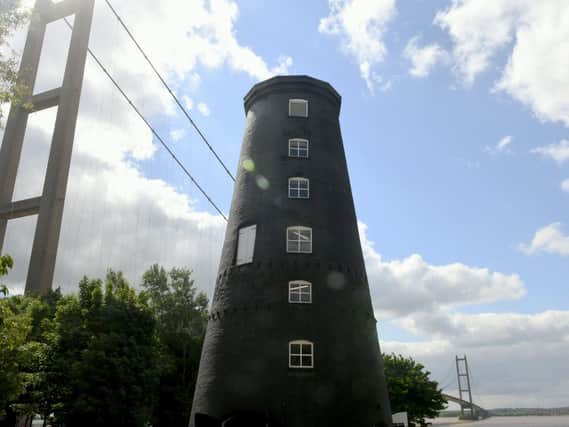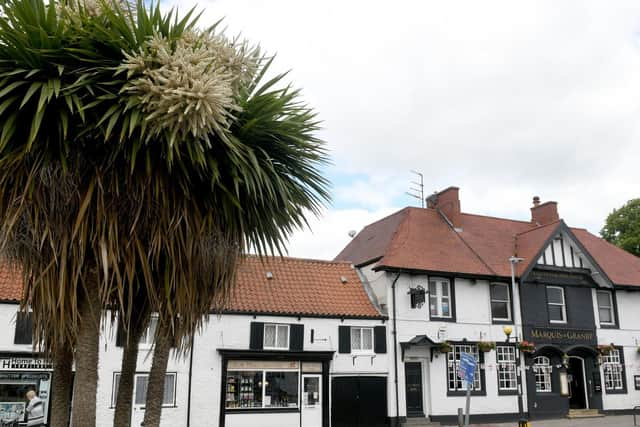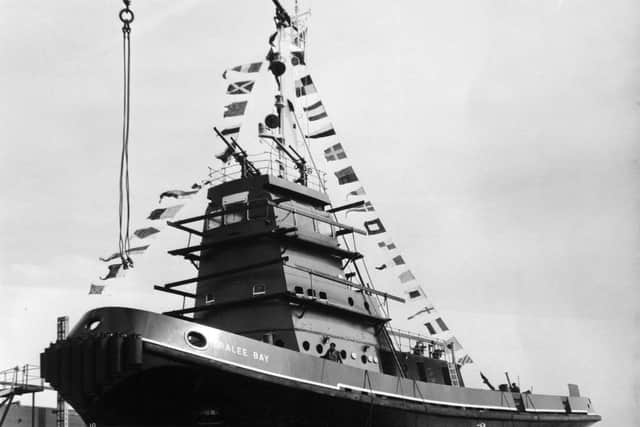Everyone from the Vikings to the Victorians have left their mark on Hessle


Probably best known as the place the Humber Bridge touches land on the north bank of the estuary, Hessle actually has a fascinating industrial and cultural background, thanks mainly to the unique attributes of the geology and landscape..
The town sits right where the flat clay plain of Hull and Holderness meets the chalk of the Yorkshire Wolds as it rises out of the Humber. At this junction is Hessle Haven, a short-but-deep tidal inlet from the estuary. It’s recorded that there was a ferry to Barton, on the south bank of the Humber, that ran from the Haven (or Fleet, as it was then known) as early as the 7th century.
Advertisement
Hide AdAdvertisement
Hide AdThere was eventually a pub, warehouses for incoming goods and ship building and repair services located at the Haven. Indeed, shipbuilding continued on the site until as recently as 1994. It was also the start of the Pilgrim’s Way, a road travelled by people wishing to visit Beverley Minster to worship at the Shrine of St John of Beverley.


Hessle Foreshore, a narrow chalk beach that runs for several miles west along the bank of the river, begins at The Haven. It was an ideal landing place for Angles, Saxons and, later, the Vikings, and there may well have been earlier settlers in Hessle.
A couple of miles along the banks of the Humber the Ferriby Boats, the frames of a pair of Bronze Age sailing boats, were discovered that prove the area was in use almost 4,000 years ago and the earliest boats of the type to be found anywhere in Europe. The Romans were also known to have occupied Brough, just a little further along the river bank but, so far, no evidence of them has been uncovered at Hessle.
Agriculture and brick and tile making provided industry for the town over the centuries and the population grew slowly but steadily. Around 4,000 people lived in the town by the turn of the 20th century but when the fishing industry in Hull took off, many of the wealthiest in the city made their homes in Hessle and tree-lined avenues were created on the first slopes of the Wolds.
Advertisement
Hide AdAdvertisement
Hide AdThere are consequently many fine examples of large Victorian and Edwardian houses to the west of the town, and it’s this area that provides much of Hessle’s air of relative affluence.


The accepted centre of the town – Hessle Square – arrived in the 1920s and rapid house-building toward the east eventually meant that Hessle joined up with the westward-spreading Hull.
Probably the most significant development in the entire history of the town was the arrival of the Humber Bridge.
Again, because of the nature of the geology, Hessle provided the most suitable location for the north anchorage and so work began to create the world’s largest single span bridge in 1973. Finished and opened in 1981, the northern approach road frames the western edge of the town and – as the southern tower is sunk into the river – Hessle provides the closest and most popular visitor access to the spectacular structure.
Advertisement
Hide AdAdvertisement
Hide AdWalkers attempting the Wolds Way often start at the stone sculpture on Hessle Foreshore, as this provides a nice photogenic view of the Humber Bridge, but the walk technically begins a few hundred yards further east – at the Haven –and runs 80 miles in a crescent shape to Filey. Due to the Humber regularly flooding parts of Hessle there has been major investment in the tidal defences that now run along this stretch of the foreshore, right along the riverbank to the centre of Hull.
Just under the Humber Bridge there is a distinctive black windmill that is all that is left of the chalk quarrying industry that provided Hessle with much income for several hundred years. There was an earlier horse-powered mill of uncertain history on the site (there are records indicating chalk was quarried as early as the 14th century) but it is known that the current sail-powered mill was built sometime around 1815.
It was used to crush the chalk excavated in the adjoining Hesslewood quarry into a purified powder called whiting, which was used to make things like putty and is still utilised in the manufacture of rubber, paint and plastics. The mill has been disused since 1970, when excavation in the quarry ceased, but it has recently been renovated and is open to the public.
The quarry itself was left to return to nature and, within a decade, was overgrown with trees and plants and became a sanctuary for bird and animal life. The centre of the quarry filled with water to create a deep pond and the whole area was hugely popular with the kids of Hessle.
Advertisement
Hide AdAdvertisement
Hide AdIt is known to everyone in the town as Little Switzerland (or, more commonly, Switzy) but signage rather officiously labels it the Humber Bridge Country Park. It was first gentrified when the bridge opened and was designated a nature reserve around 20 years ago. It remains one of the best-kept secrets of the East Riding.
Despite only claiming a population of around 15,000, Hessle punches well above its weight in cultural terms. There is a well-regarded amateur theatre company and a sinfonia of amateur musicians and the Town Hall often hosts acts more commonly-found in much larger venues.
In the late 1950s, a regular visitor to Hessle was Philip Larkin. His first mature collection of poetry, The Less Deceived, was published by The Marvell Press, an independent imprint run from a small terrace house on Hull Road by George and Jean Hartley. The book went on to be crowned book of the year by The Times Literary Supplement and Larkin gained national attention. The footpath at the start of the Wolds Way at Hessle Haven – Jean’s Walk – is named in honour of Jean Hartley.
Largely thanks to the continued excellence of Hessle High School, the town can also claim a strong heritage on stage and screen.
Advertisement
Hide AdAdvertisement
Hide AdFormer pupils include comedian Lucy Beaumont, actor and writer Derren Litten (Catherine Tate Show, Benidorm, Scarborough) and actor Michael Jibson, who has appeared in films like The Last Jedi and 1917 and took leading stage roles in Brighton Rock, Madness musical Our House and as George III in the original London production of Hamilton, for which he won an Olivier Award for Best Actor. He is now patron of the Hessle Theatre Company.
The school itself has an interesting history as the main building, Tranby House, was once owned by Algernon Barkworth, a timber merchant who was born in the house and later became best known as a survivor of the Titanic.
In a letter to the local paper - written when he eventually reached New York - he said that he had booked a first-class ticket to ‘see what it was like’ and survived by jumping 30ft into the sea and clinging to an overturned lifeboat until he was rescued by the S.S. Carpathia. Thirty years later, in his will, he bequeathed Tranby House to the local education authority.
With industry now all but vanished, Hessle may struggle to justify or keep its independent status, but it can at least lay claim to being the true home of the Humber Bridge.
Comment Guidelines
National World encourages reader discussion on our stories. User feedback, insights and back-and-forth exchanges add a rich layer of context to reporting. Please review our Community Guidelines before commenting.